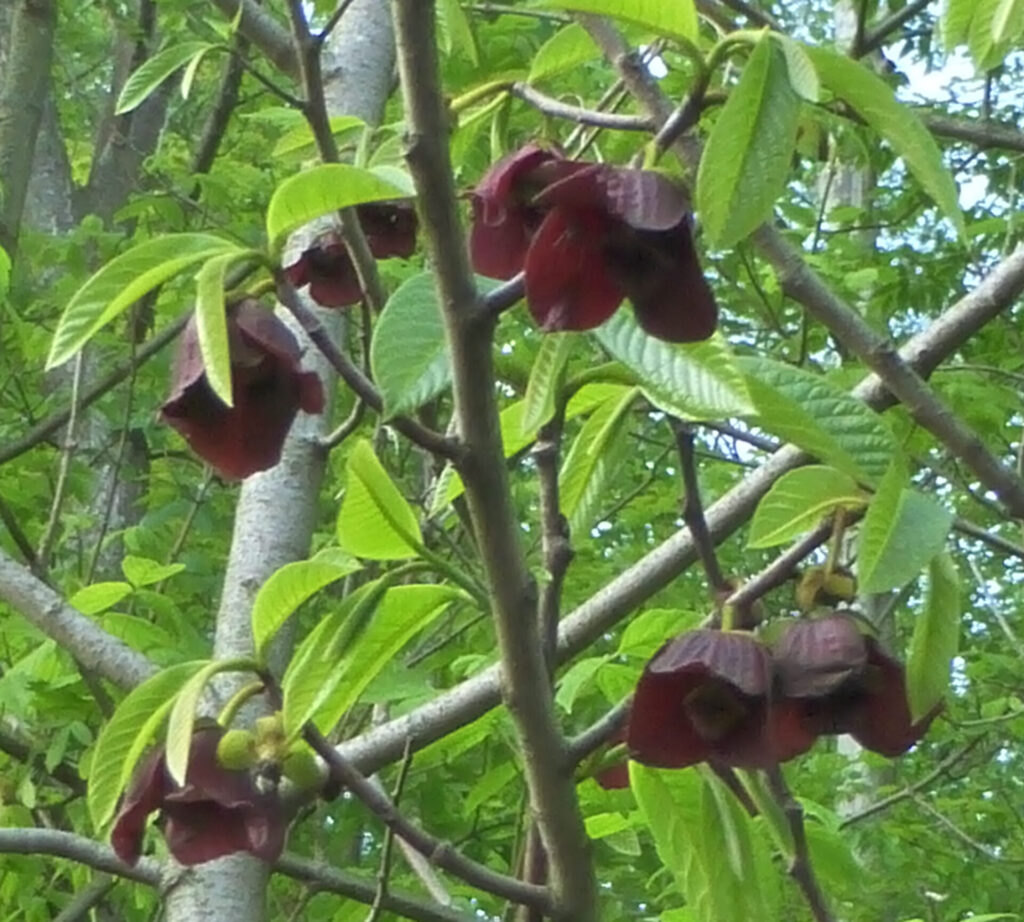A small, deciduous tree that yields the largest fruit native to North America. It’s part of the Annonaceae family, which is the largest family of the magnolia order. Pawpaw trees can grow to a height of about 25 feet and feature maroon-colored blossoms with 6 petals in spring. (When grown in shady and protected areas of established forests, they only get to be 2 to 12 feet (0.6 m to 3.7 m) tall.) The leaves are dark green, shiny, and oval shaped with pointy ends. They can grow up to 1 inches in length. In the fall, foliage turns varying shades of yellow. For fruit production, pawpaw must pollinate each other. However, they are self-incompatible, meaning each tree must be cross-pollinated by another pawpaw that is unrelated to it. Remember to obtain two separate sets of seeds for cross- pollination. Pawpaws have an elusive taste similar to that of vanilla custard or a combination of banana and mango.






